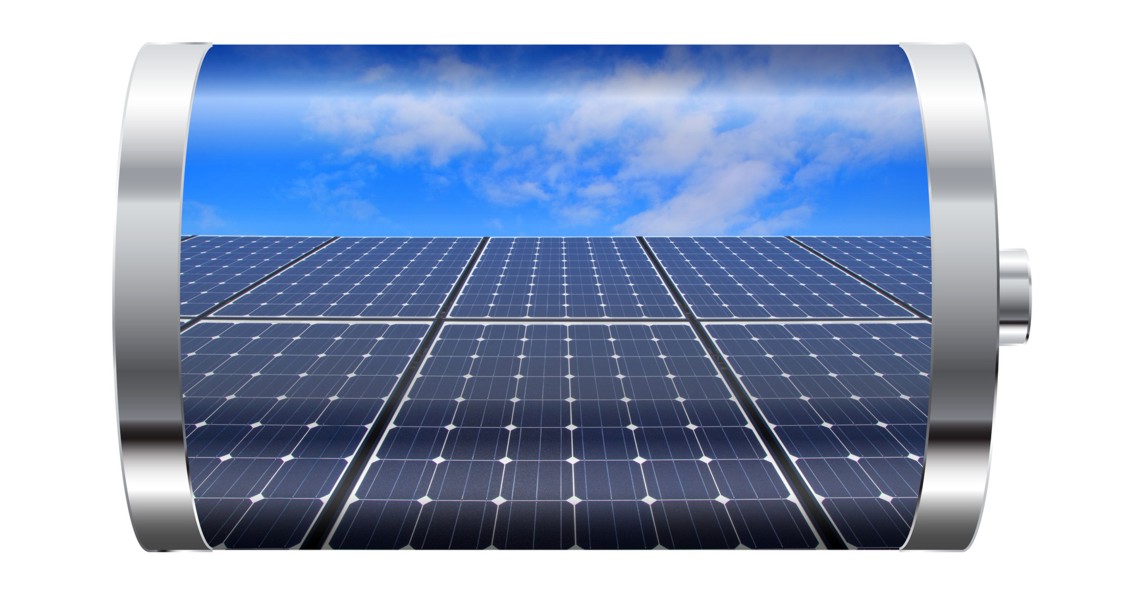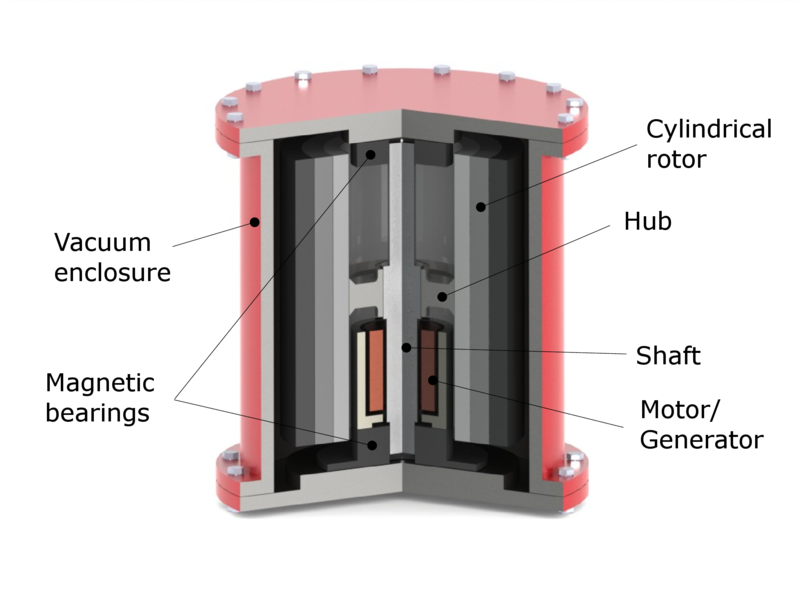What is energy storage?
Energy storage is the capture of produced energy for use at a later date. Energy storage helps to fundamentally improve the way electricity is generated, delivered, and consumed. It enables electricity networks to become more resilient, efficient, and cleaner by rapidly balancing the supply and demand.
There are various technologies that can help capture and store energy. Hydroelectric energy storage was historically the most common storage technology. Energy is stored in the form of gravitational potential energy of water; during periods of high demand, electric power is produced from the release of stored water through turbines within a traditional dam. However, battery storage is becoming a more commonly used storage technology. There are many different types of battery storage. Three of the most common types are:
-
Lead acid: this is the oldest type of battery storage and applies the same technology used in most gas-powered car batteries. They are not the most efficient or scalable to high capacity.
-
Lithium-ion: this type of battery storage is now the most common and is becoming cheaper. It scales to large capacities relatively well and is the same technology used laptop batteries and electric vehicles.
-
Flow batteries: this is considered by many to be the next frontier and has the potential to change the energy storage market. Energy is directly stored in an electrolyte solution for longer cycle life, and has a quick response time. Similarly, it has a greater efficiency than the previous battery storage technologies.
In addition to battery storage, there are also flywheel and compressed air storage technologies. Flywheels hold energy by rotating at a high speed. When energy is extracted, the rotational speed of the flywheel decreases, while adding energy to the system increases the rotational speed. Flywheels have been used for decades, mainly for storing relatively small amounts of energy to fine-tune the voltage on an electrical circuit with a quick response time. Compressed air is a technology that uses surplus energy to compress air in order to generate electricity. The technology stores the air in a tank or natural underground salt reservoirs in the largest applications. The air can be used individually to power turbines or can be added with a reduced amount of natural gas in a more traditional natural gas power generator.


Different energy storage technologies have varying storage capacities, meaning that technologies differ in the amount of energy they can store. Different combinations of characteristics are useful in different settings: for example, to quickly manage the voltage on a grid circuit with a jolt of power, a quick response would be needed and therefore, it would be impractical to use a slow responding, large capacity storage technology like hydro storage. Instead, flywheels are commonly used for this purpose while supercapacitors, an emerging technology, would be able to do this. Conversely, if an area has a lot of solar energy installed, a high capacity storage technology would satisfy demands at night, but a quick response time would not necessarily fill the same role. Germany uses pumped hydro for this purpose.
How are storage technologies used?
There are various ways storage technologies are used. Storage technology may be used in grid management: small fluctuations need to be managed in grid energy in order to maintain a constant voltage. Just as a power surge change can blow a household appliance, a change in grid voltage can damage the systems that reliably transport energy to households. This will become especially important as more renewable energy sources come online because an increase in the number of intermittent generation resources means greater potential for fluctuations. This will require a more careful grid management through a diversity of storage technologies.
The largest development of energy storage technology is with utility scale storage or “load shiftng.” Storage is needed to prevent breaks in the service when the sun isn’t shining and the wind isn’t blowing within a grid region. Similarly, storage is also needed when these renewable resources are too plentiful and the energy produced is put into storage so the grid will not become overwhelmed. Storing energy can enable output to be controlled and the exact voltage frequency can be tightly regulated. This is essential for a 100 percent renewable energy grid.
Energy storage technology is also used with smaller scale storage, including, for example, the home battery that Tesla released in 2015. Families and homes can now have energy storage for their personal generation, such as from their rooftop solar or wind sources.
What is the state of energy storage in Texas?
According to a series of assessments by Husch Blackwell, Texas plays a leading role in storage technology; Texas has been described as an ideal test site for storage technology and consequently, the state uses a variety of storage technology.
Utilities, such as CPS Energy, Austin Energy, and Pedernales Electric Cooperative, are also pursuing lithium-ion battery storage projects. CPS currently owns a 1 MW battery which is used to regulate energy from its 40 MW Alamo 1 solar farm. The next battery CPS is installing will be able to store and deploy 10 MW of power, enough to supply 2,500 homes, for one hour at a time. The battery project is being funded through a $3 million grant from the Texas Commission on Environmental Quality (TCEQ).
Similarly, Austin Energy is the recipient of a $4.3 million grant from the Department of Energy in 2016 and consequently, plans to install two battery projects to tie-in with two Austin-based solar farms. One battery will support a 2 MW solar farm, while the other will store energy collected by rooftop solar from residential and commercial residents in a mixed-use development neighborhood. Pedernales Electric Cooperative, located in Central Texas, has also received a Department of Energy grant of $3.24 million to pursue its own energy storage demonstration project as a way to stabilize the energy produced by the co-op’s multiple solar facilities, while also having a separate on-bill financing program to support customer battery storage.
Another example of lithium-ion battery storage in Texas is Oncor, Texas’ largest transmission and distribution company. Oncor now operates a 200 kW lithium-ion Tesla battery, and deploys five 50 kW lithium-ion battery systems on their distribution system in Dallas. The batteries are used when the electricity is stopped due to extreme weather events or equipment malfunctions and are consequently are only used to supply electricity when the energy grid is down. Additionally, Goldsmith, Texas is home to the largest utility-scale battery in the United States: the 36 MW Notrees Battery Storage Project operated by Duke Energy, which converted to a lithium-ion technology in 2016 after originally being a lead-acid technology. The storage helps to increase power reliability by optimizing joint energy delivery from the battery and the 153 MW Notrees wind farm.
Flywheel projects in Texas store a total of 5.6 MW. One such project is a unit in Austin that stores 4.8 MW, where the flywheels are used to increase power back-up reliability and therefore, help protect Austin Energy’s new control center. Furthermore, flywheels are used to provide electric spinning supply reserve capacity, which in turn improves resiliency at the Texas Scottish Rite Hospital for Children in Dallas and JV Industrial Data Center in La Porte.
In addition to a compressed air storage project in Seminole, which provides reserves, voltage support, and frequency regulation, there is currently a compressed air energy storage project planned in Anderson County. If constructed, the Apex Bethel Energy Center will be the largest storage project in the Texas market and is projected to help provide a renewable energy diversification. According to Apex, construction will begin in June 2017 and the project will become operational in 2020.
Why is energy storage so important?
Energy storage technology will become increasingly important in delivering energy in the near future. It arguably has the potential to transform the electricity industry because without energy storage technologies, a 100 percent renewable energy grid will not be possible. Energy storage can help to integrate renewable energy effectively and reliably, especially those with a variable output, such as wind, solar, and ocean wave and tidal generation.
The integration of renewable energy, however, poses two additional challenges. One challenge is the temporal difference between generation and peak demand. Solar and particularly wind energy generate electricity during times when the demand is not at its peak - late afternoon/early evening. Energy storage technology has the ability to capture energy that can then be used when demand is highest and therefore, allows electricity from a power source to be used more efficiently.
Another challenge that may arise is fluctuations in output, including changes in wind speed or decreased solar radiation from temporary cloud cover. Variability can last from seconds to minutes and longer, but also be influenced by seasons. Energy storage technology can help mitigate these challenges by providing the amount of energy needed to compensate the decreased output, especially at key times. Storage technologies are a vital piece of future energy grid that utilizes large amount of renewable energy sources.
How do we implement more energy storage in Texas and how would Texas be better off if the state had more energy storage?
There are a number of obstacles that prevent further development and deployment of electric energy storage in Texas. Unsurprisingly, the utilization of energy storage depends on the costs and benefits of each technology compared to other options, resulting in project economics playing a major role. Current energy storage technologies are generally still more expensive than natural gas generators, which can provide a similar service and therefore, reducing the cost of energy storage technology is an important way to accelerate market acceptance. However, a recent report conducted by Lazard, a financial advisory and asset management firm, found that storage is becoming more cost-effective and certain technologies are beginning to compete with peaker plants, especially in markets with higher energy prices, such as in California.
However, more large-scale demonstration projects are needed before utility managers have the confidence to invest more heavily in these technologies, but developers may face project-specific delays or cancellations. Additionally, some regulated utilities are unwilling to invest in energy storage technologies because of the lack of competition within the market for generation. Some generation owners are reluctant to invest in new technologies due to the uncertainty over whether they would be able to recover their capital costs. As a consequence, the energy industry invests only a small proportion of profits into research and development, which therefore limits the speed of improvements in energy storage technologies.
How is the Sierra Club involved?
The Sierra Club’s Lone Star Chapter works at the state level to influence policy from the Texas Legislature and the electric grid operator, the Energy Reliability Council of Texas (ERCOT). The Texas Legislature has the ability to boost energy storage through grants and incentives or can hinder development by protecting polluters or making it harder for energy storage to enter the energy market. For example, we are currently working with the Texas legislature to extend the programs at the Texas Emissions Reduction Program that support storage and other new technologies.
We work with our allies to encourage policymakers to support the development of energy storage technology. At ERCOT, we participate in the development of new rules for how the energy grid can facilitate storage development. As the technology becomes more prevalent, questions on how battery operators should be defined and managed become important to ensure both fair treatment and reliable electricity for consumers.
At the local level, we support Sierra Club volunteers across the state who work with cities and constituents to increase support for energy storage. As energy utilities plan their generation portfolios for the future, volunteers can push for more aggressive energy storage goals on the part of their communities and electricity providers.
Stay up to date on energy storage and other important work at the Sierra Club’s Lone Star Chapter by signing up for our newsletter.